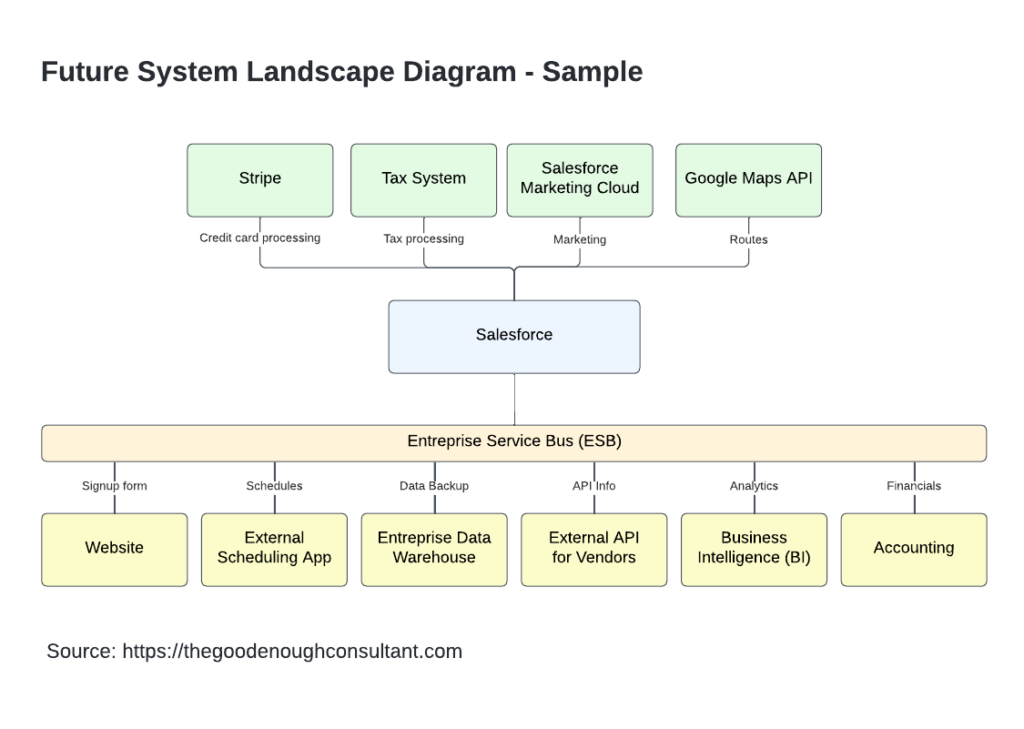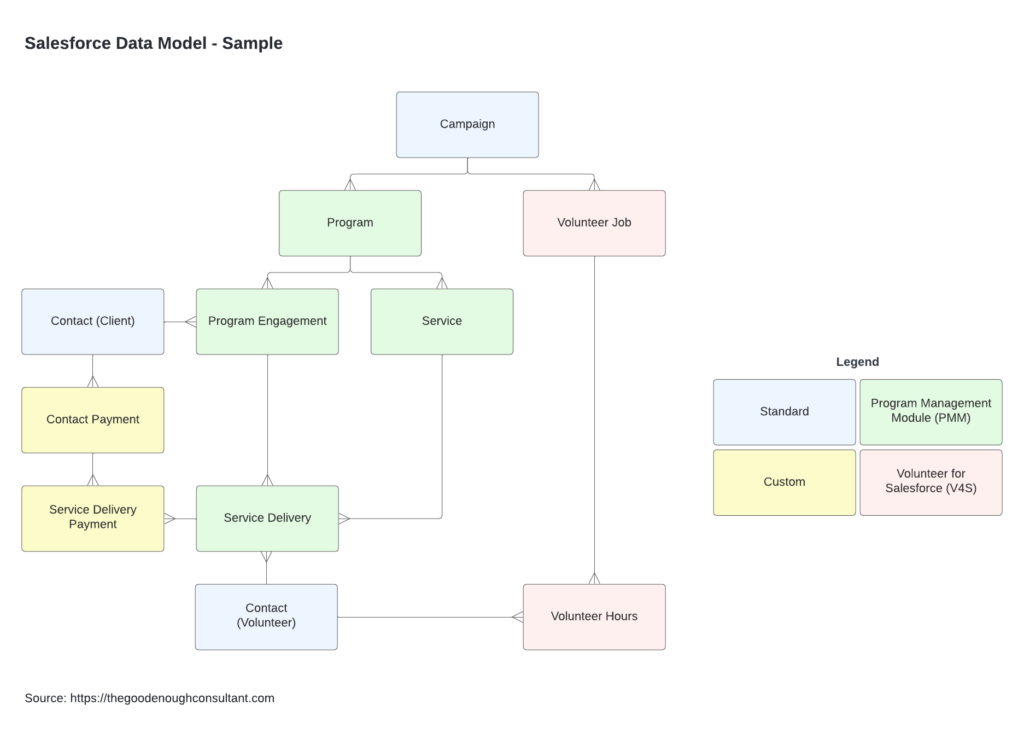When conducting a Salesforce discovery project, there are a number of technical deliverables. Here are the usual suspects:
1. Current and Future System Landscape
Purpose:
- A visual diagram representing the current state and target future state of Salesforce in context with other connected systems
Usage:
- Helps understand the breadth of technical work required
- Helps understand the key data passed in integrations
- Are a primary source for data modelling and recommendations for 3rd party apps
Required:
- Connections between Salesforce and external systems
- Name and purpose of each system
- Key data elements passed between systems
Example:

2. Salesforce Data Model
Purpose:
- Offers a high-level conceptualization of Salesforce objects and their relationships
Usage:
- Identifies when to use standard vs custom objects
- Serves as a navigational aid for the implementation team
- Should be kept up to date as the project is implemented
Required:
- A diagram containing standard and custom objects
- An indicator to identify which objects are standard vs custom (like using a different color)
- The relationship type
Example:

The takeaway
These documents are critical during the discovery phase. They also form the foundation for the implementation phase. It’s important to keep them up to date during implementation, to ensure everyone is aligned.
Category:
Salesforce 